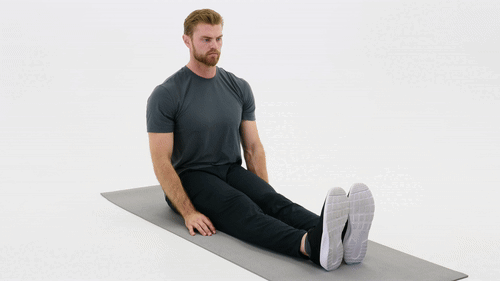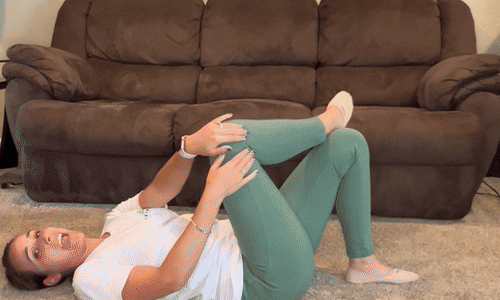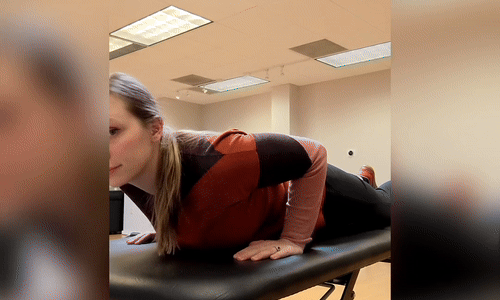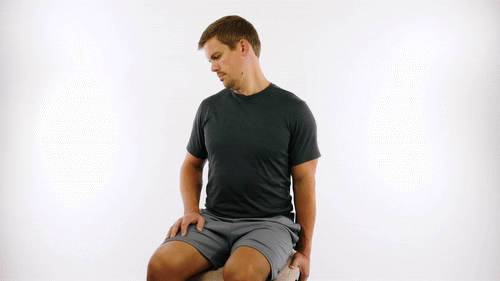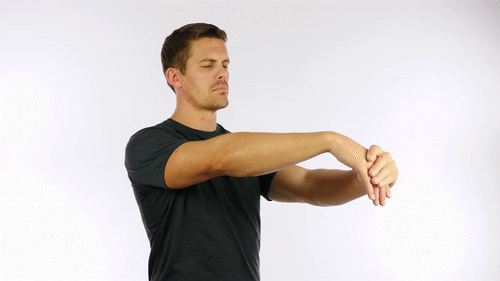Muscle Pain Relief: 6 Best Stretches for Generalized Muscle Pain
Struggling with widespread muscle pains? you're hardly alone. Studies show that up to 85% of us grapple with pain from muscles and fascia; the tough connective tissues that hold them together. Generalized muscle pains come in many forms and sizes. For some, it's the nagging dull ache that lingers around after intense physical activity while for others, it's persistent pain with underlying conditions like Fibromyalgia. Whether they’re occasional aches that creep in after a long workday, or discomfort that’s secondary to a known condition, knowing what to do can be a game changer.
There are a number of highly effective treatment options to deal with all forms of muscle pain. Physiotherapy treatment options like Soft tissue manipulation techniques, exercise and medication(in severe cases) can work wonders in the short and long term. Stretching is a key part of treatment for most forms of muscle pain along with massage techniques. The key is in getting the right professional attention and learning effective stretching techniques you can easily execute back home. We'll look at how stretching can help you achieve long lasting relief, and explore some of the most effective stretches for key muscle groups.
Common Causes of Generalized Muscle Pain
1. Underlying Medical Conditions
There’s a wide range of medical conditions that manifest with generalised muscle pain as part of a symptom profile. The most common ones include:
Polymyositis: A chronic autoimmune disease where the body's immune system causes muscle damage and inflammation.
Fibromyalgia: A chronic condition which commonly presents as generalized or regional muscle pain due to changes in the Central Nervous System’s capacity to regulate pain.
Hypothyroidism: An under-active Thyroid Gland may trigger a series of processes which may cause general muscle pains.
Infections.
2. Overtraining/Overworking
Ever felt like you’re just out of a wrestling match the morning after an intense workout or sports. That's what's called Delayed Onset Muscle Soreness(DOMS). When muscles are stressed beyond their limits, they can get inflamed and painful due to micro-injuries within the muscle tissue.
3. Psychological Stress
Psychological stress is associated with increased muscle tension, which may be regional or generalized. Stress promotes release of various hormones and substances which increase muscle tension. Prolonged tension promotes inflammation and increases the risk of trigger points(sensitive and painful spots within muscles). Studies also show that stress impairs muscle ability to recover from exercise, which in turn increases the risk of exercise induced muscle soreness.
How Stretching Helps
Decreasing Muscle Tension
As mentioned earlier, increased muscle tension is one of the key causes of generalized muscle pain. Stretching helps with decreasing muscle tension, which in turn decreases the pain. Here is how it works in basic terms.
Increased muscle tension results from over-stimulation of muscles by the Central Nervous System. When you stretch a muscle, you stimulate special sensory nerve cells within its structure, called Muscle Spindles. These cells send signals to the central nervous system, which further triggers a series of processes that decrease over-stimulation of the affected muscle.
Decreasing Pain Sensitivity
Stretching stimulates stretch receptors, which send signals to the spinal cord. This stimulates other nerves within the Spinal Cord which limit transmission of pain signals to the Brain.
Effects on the body's Hormones
Stretching promotes release of the body's natural "feel" good hormones known as endorphins. It also helps with decreasing stress hormones such as Adrenaline and Cortisol.
Best Stretches for Muscle Pain Relief
The Seated Curl
Muscles Stretched: Hamstrings, Calves, Spine and neck extensors.
How to do it
Sit down on a mat, with legs straight in front and clasped together.
Reach for your feet with both hands, hold and bend your feet backwards.
Curl your back and neck downwards towards your knees.
Hold for 15-20 seconds.
Return to the starting position.
Repeat 2-3 times
Side-lying Quad Stretch
Muscles stretched: Quads, Hip Flexors
How to do it
Lie down straight on your right side. Use the bottom hand to cushion your head and keep the neck in neutral position.
Bend the left leg and reach for your shin just above the ankle.
Bend the leg to full knee flexion.
Gently, pull the leg backwards to a point where you feel a general stretch in the thigh and groin area.
Hold for 15-20 seconds, release.
Repeat for 2-3 times.
Repeat the sequence on the other side.
Supine Glute Stretch
Muscles stretched: Gluteal muscles
How to do it
Lie down on your back.
Bend your legs, get your feet flat on the floor.
Lift your right ankle and rest it on your left leg, on the outer surface of the knee.
Place your left hand on the outer side of the right knee and push to the left. You should feel your Glutes stretching as you add more pressure.
Hold for 15-20 seconds, then release.
Repeat for 2-3 times.
Repeat the sequence on the other side.
Side Twist
Muscles Stretched: Obliques and Glutes
How to do it
Lie down on your back.
Spread your arms on the sides, palms on the floor.
Bend both legs and get your feet flat on the floor.
Cross your left leg over the right leg.
Twist to the right side, this should get you feeling a gentle stretch on your left glutes and Obliques(left side of the low back area).
Hold for 15-20 seconds.
Return to the strating position. Repeat 2-3 times on each side.
Cobra Stretch
Muscles Stretched: Abdominals, Hip flexors.
How to do it
Lie down on your mat, face down.
Position your hands just in front of your shoulders.
Push down on the floor and raise your head and chest until you feel a gentle stretch in your back and abdominal area.
Hold for 15-20 seconds, relax. Go for 2-3 reps.
Alternatively, hold for 1-2 seconds, repeat for 10-15 times.
Trap Stretch
Muscles Stretched: Trapezius and other smaller neck muscles.
How to do it
Stand tall, or sit on a bench or stool.
Cross your right arm over the head and reach for the right ear or just above it.
Tilt your head to the left side until you feel a gentle stretch in the right neck area.
Hold for 15-20 seconds. Repeat the sequence, 2-3 times.
Repeat on the other side.
Levator Scapula Stretch
Muscles Stretched: Levator Scapular and other deeper neck muscles.
How to do it
Stand Tall, or sit on a bench or chair.
Turn your head to the right and bend the neck towards the right hip..
Lift your right hand over the head and hold the back of the head.
Apply diagonal pressure towards the right hip. You should feel a deep stretch in the left side of your neck.
Hold for 15-20 seconds, 2-3 reps.
Repeat on the other side.
Chest wall stretch
Muscles stretched: Chest, Biceps, front shoulder, and forearm muscles
Stand tall with your right side at arms length from a wall.
Stretch your right arm and rest your palm on the wall.
Turn your head, shoulders and chest to the left. You should feel a moderate-strong stretch across your right shoulder, arm, and forearm.
Hold for 15-20 seconds, 2-3 times.
Return to the starting position.
Repeat the sequence on the left side.
Standing Triceps Stretch
Muscles stretched: Triceps(arm) and shoulder extensors.
How to do it
Stand tall, with feet shoulder width apart.
Lift your left hand over your shoulder and bend it backwards to reach for the right shoulder blade.
Apply backward pressure on the right elbow with your left hand. You should feel a comfortable stretch on the back of your upper arm.
Hold for 15-30 seconds, repeat 2-3 times.
Repeat the sequence on the left side.
Forearm Stretch
Muscles stretched: Wrist extensors.
How to do it
Stand tall or sit on a chair.
Raise your right arm straight up to shoulder level.
Bend your wrist downwards.
Use the left hand to apply extra pressure on the right hand. You should feel a stretch sensation along the top portion of your arm.
Hold for 15-20 seconds, 2-3 reps.
Repeat the sequence on the other side.
A word of Caution
Much as these stretches may be effective when it comes to dealing with muscle pain, it's always prudent to consult your Physiotherapist or medical Doctor. This is crucial if you have an underlying condition like Fibromyalgia, Polymyositis, Hypothyroidism etc.
More questions or looking for guidance through your stretching routine?
Book Now
Reach out to our Physiotherapists through the form or give us call today(the number on the top right corner).






